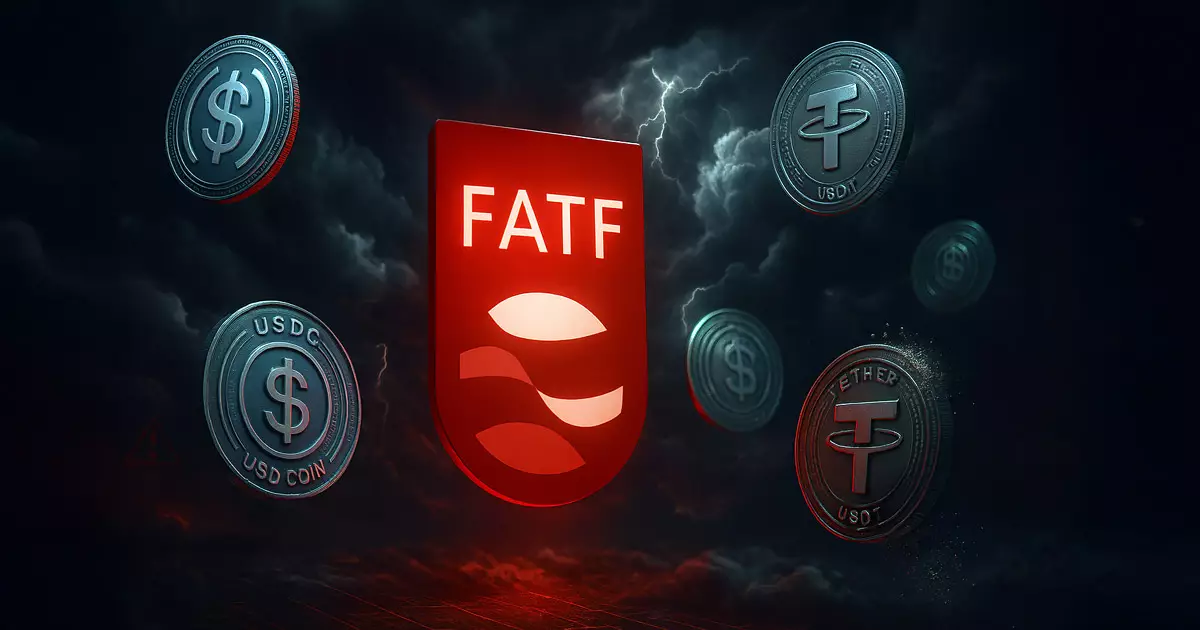The Financial Action Task Force’s recent report paints a sobering picture of the current state of global regulation concerning virtual assets. While legal frameworks such as the Travel Rule have seen adoption across 73% of surveyed jurisdictions, this progress masks a troubling reality: enforcement remains appallingly weak. Passing laws on paper is merely the first step—not the end goal. Few countries have moved beyond legislation to actively monitor, enforce, and sanction illicit activity, rendering these measures largely symbolic. In a world where financial crime evolves rapidly, regulatory lag becomes a facilitator, not a deterrent, of abuse.
Stablecoins: The Trojan Horse of Illicit Finance
Stablecoins are increasingly becoming the go-to vehicle for money laundering and other nefarious financial flows. Their appeal lies in their rapid transaction speeds, broad liquidity, and relatively low transaction costs—traits that legitimate users value but which also attract sophisticated criminals. The FATF report astutely identifies stablecoins as the dominant on-chain method for illicit activity in 2025, further amplified by a staggering $30 trillion in annual volume. This scale not only challenges regulators but also signals how stablecoins are too strategically critical to ignore or underregulate. Instead, inadequate oversight creates a permissive environment where criminal actors can both operate and innovate.
The Pyrrhic Victory of Crypto Theft Recovery
North Korea’s massive $1.46 billion virtual asset heist from Bybit and the subsequent recovery of a mere 3.8% of the stolen funds starkly illustrates the enormous challenges in tracing crypto crimes. Complex laundering schemes leveraging mixers, over-the-counter traders, and hundreds of thousands of Ethereum wallets show just how sophisticated and opaque these operations have become. The meager recovery success rate reveals that existing investigations and technical tools remain ill-equipped against well-resourced state-backed hackers and criminal syndicates exploiting blockchain’s pseudonymity.
Decentralized Finance: The Wild West Still Untamed
Decentralized finance (DeFi), often hailed for innovation and disintermediation, is frustrating regulators worldwide. About half of jurisdictions surveyed require DeFi projects with identifiable controllers to register as Virtual Asset Service Providers (VASPs), yet enforcement is rare if not non-existent. Given DeFi’s borderless nature and fluid governance, this regulatory inertia is dangerous. It creates systemic vulnerabilities where criminal actors can exploit fragmented oversight to execute scams, fraud, and money laundering with little fear of deterrence. Regulatory frameworks must evolve beyond traditional centralized paradigms to meaningfully address DeFi’s unique challenges.
The Danger of Regulatory Fragmentation
The FATF’s warning about uneven global regulation couldn’t be more prescient. As stablecoins edge closer to widespread adoption, disparities in national regulatory regimes will inevitably facilitate regulatory arbitrage. Illicit actors will gravitate toward jurisdictions with lax oversight, exploiting loopholes and jurisdictional mismatches. This fragmentation undermines collective security, frustrates coordinated enforcement, and weakens global financial integrity. The international community must prioritize harmonizing standards and enhancing real-time cooperative enforcement mechanisms instead of merely ticking compliance boxes.
An Urgent Call for Accountability and Action
The report’s revelation that only one country is “fully compliant” with FATF’s Recommendation 15 on virtual asset regulation is damning and unacceptable. The fact that a significant chunk of jurisdictions remain partially compliant or non-compliant signals a profound systemic failure. For those committed to safeguarding economic sovereignty and the rule of law, lukewarm regulatory enforcement is tantamount to complicity. Licensing regimes for virtual asset service providers must be accelerated, unregistered entities rigorously pursued, and technological capacities for surveillance and sanctions vastly improved. Without decisive action, the promise of crypto as a force for economic innovation will be overshadowed by unchecked criminal exploitation.
Looking to the Future: A Precarious Path Ahead
FATF’s plan for further targeted reports on stablecoins, offshore VASPs, and DeFi underscores the complexity and urgency of these challenges. Yet, time is not on the side of regulators. The next major update in 2026 must reflect substantial progress, or else the crypto ecosystem risks becoming a haven for illicit finance rather than a legitimate financial frontier. Center-right liberals who value rule of law, economic stability, innovation, and global cooperation should advocate for stronger, targeted, and enforceable regulations—balancing freedom with responsibility to preserve the integrity of financial markets and the broader economy.















